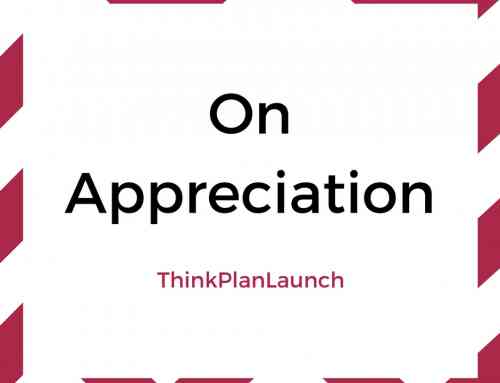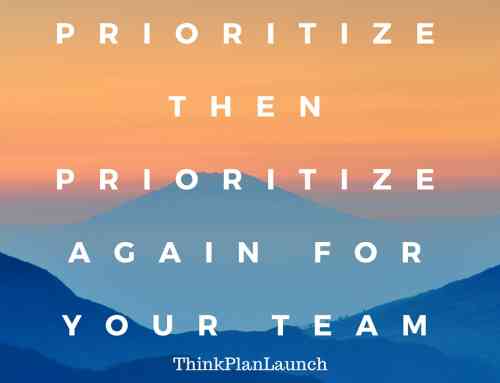Table of Contents
Leadership skills for the High-S is hardly obvious. After all, S stands for “Steady” while the other behavioral types, D for “Dominant” and I for “Influencer,” seem like a better DISC profile to match a leader. The truth is, the High-S, who is known for being passive, inactive, and predictable, can thrive as a leader in the right environment. If you don’t know your DISC profile, it is always a good idea to take an assessment to determine which style you are. Organizations that call for loyalty, steadfastness, and an adherence to the status quo allow the High-S to be an effective leader. When there is a long-term, difficult task to accomplish, the High-S is known to finish the job without considering abandonment. The High-S has the endurance and willpower to overcome boredom and the need to take risky shortcuts to finish something. In addition to this, the High-S is also emotionless in the face of the team and the competition. The serves a multitude of advantages when a poker face can hide true emotions that will jeopardize a team’s morale or giveaway weakness to the enemy.
As with the other DISC behavioral types, there are weaknesses associated with the High-S which can cripple leadership abilities. In this article we will explore some of the limitations that inhibit the High-S leader and skills that must be developed for success to take place. We will also reveal some of the areas that the High-S will excel at which should be taken advantage of.
Undying loyalty of the High-S
The High-S is naturally a good listener and a good team worker. As a subordinate, the High-S will follow a leader that is perceived to be worthy of the person’s values or beliefs. As a leader, the High-S will follow a cause or ideology that shapes actions and gives the High-S the ability to put in the long hours needed to support that cause or ideology. While other DISC types are equally capable of hard work, the High-S does it because of a belief rather than other reasons. This can be powerful if the High-S leader can align these beliefs with that of the team.
When backed by a strong the belief, the High-S leader will patiently work toward goals. Fewer, long-term objectives are preferred and the High-S who has an authoritative position will do well to keep others on task toward these goals. Other behavioral types don’t fare too well with such tasks. As such, the High-S leader faces a challenge when leading a team on these types of tasks. The High-I tends to be more of a motivator than the High-S. However, the High-I will do well to prevent others from influencing any change of direction that will put the mission off course. As a leader, being consistent and predictable is an advantage when it comes to discipline. A leader that is constantly changing minds or direction might prove to be incompetent for some. A steadfast leader provides peace of mind to those who need it.
While most organizations could use the High-I to lead the way, there are times when this could be disadvantageous. In the case of following sinister beliefs or ideologies, the High-S’s unwavering stance could put the leader and the team in danger. During the times of the civil rights movement, many High-S leaders opposed changes to the system that they saw threatened their beliefs. Equally, technological and scientific advances might not inspire the High-S to keep up with the times. Attitudes of “not fixing things that aren’t broken” and “things are good enough as-is” have lead to the downfall of many organizations. Newspapers are famously known for not being quick enough to adapt new technology.
The High-I must be cautious about the unwillingness to change. While the High-I can be an effective leader, success might come through other means such as innovation where change and risk create new revolutions.
Project management for the High-S
Any effective manager or leader must be able to take on projects of considerable complexity or difficulty for value to be created among the face of competition. The High-S leader excels at singular projects with long due dates. However, if too many tasks are at hand, the High-S can struggle. Taking on too many tasks are not desirable for the High-S. This leads to stress and a breakdown of leadership.
In many cases, it is not the choice of the High-S to take on multiple projects, but, in many organizations, it is necessary. Multitasking and organization skills need improvement. Luckily, such skills can be worked on and a systematic way of handling multiple projects can be made simple. There are a number of software tools out there that enable leaders to keep track of tasks and maintain a high level view of what is going on. Doing a search on management tools for your industry can reveal software that will help you big time.
The High-S who has clearly defined processes or systems will be a great project manager.
Outward emotions of the High-S
The High-S possesses the double-edge sword of being rather emotionless on the outside. During times of great turmoil, the High-S will not seem any different than before. There are a few advantages of this for a leader.
Competition is a fact that every organization must deal with. If the threat isn’t present today, then it will be present at some other point in time (if there isn’t any threat of competition, the value your organization provides might not be high enough). Being emotionless in the face of the enemy is a great advantage. It masks the intentions of a leader who makes decisions affecting competitors. It becomes difficult for competitors to understand if the High-S is highly knowledgeable and capable or ignorant and useless. This makes it hard for them to guess what actions will be taken by the High-S and what actions the competitor must take to preempt or circumvent any actions. This can cause the competition to stumble and take unnecessary and risky actions out of fear. This is great. Any avid fan of The Art of War will recognize the advantage of being mysterious.
For the organization, being emotionless can be good and bad. The good part of being emotionless is in the face of crises. Leaders who show fear, anger, or other extreme emotions appear weak and incapable of making good decisions. While inner turmoil might prevent the High-S from making good decisions anyways, there is still the advantage of having a team that isn’t going to fall apart immediately. The bad part of being emotionless is when others are clueless to what the High-S leader approves or disproves. This creates stress for those who want to follow the guidelines that the High-S sets but are unable to determine where the boundaries lie.
High-S leaders can struggle to initiate projects
One of the big weaknesses of a High-S is the lack of initiative. This becomes a big blocker for leaders who must start great tasks. Stress from the unknown prevents the High-S from beginning. To prevent this weakness from threatening the leadership position of the High-S, there must be a conscious effort provided.
The High-S should be aware of new trends, policies, and technology. Taking time to discover new ideas and thoughts must become routine. Being an early adopter and becoming experimental will allow the High-S leader to make improvements and innovations within an organization.
Optimization, improvement, innovation, adaptation, and related words must become a part of the vocabulary of the High-S. In doing so, there is a chance for the High-S to willingly take on new projects that add value where none was perceived before.
Also, the High-S leader must become accustomed to prioritization. There are a number of techniques other there. Whichever technique is used, prioritization allows the High-S to maintain focus on what is important and concentrate efforts in that area. This also includes new projects which can be readily started by the High-S who has prioritized it as of high importance.
Dealing with criticism
Criticism isn’t taken lightly by the High-S. In many cases, it is taken personally and can threaten progress when it becomes the main focus. The High-S needs to understand that criticism is simply feedback. Feedback is of ultimate use for success. Criticism = Feedback.
Feedback can be positive or negative. It can be accurate or inaccurate. Objective or subjecting. Understanding and using feedback can be more art than science. If used incorrectly, feedback can destroy projects with high potential. If used correctly, it can be a powerful tool for steering an organization to where it needs to go.
The High-S needs to work of depersonalizing criticism.
The High-S Hustle (or lack thereof)
Urgency is something that the High-S naturally lacks. This is a big weakness in many, but not all, organizations and roles. Managers in slow moving organizations rarely need to display a sense of urgency while managers in fast paced organizations (like startups) must have their knobs turned on 11 at all times.
The constant need to be accelerating forward at top speed is debatable. What isn’t debatable is the need for a leader to have that ability to control the pace as needed. During times of crises, the High-S must know when to take decisive and immediate action to prevent further damage.
When you add up the other weaknesses of the High-S (resistant to change, difficulty with multitasking, lack of initiation, unable to deal with criticism), it paints an illustrative picture of what the High-S must overcome. The good news is that the weaknesses are related to each other and a comprehensive effort can be made to tackle them all.
Even better is that all of the strengths are related too and can provide the High-S leader with an effective way to lead a team.
The bottom line for the High-S:
1. Use your loyalty to a cause to rally your team
As a High-S you naturally will champion a cause that you believe in. Learn how to inspire your team to follow this cause to move them into action.
2. Warm up to change
Change isn’t the end of the world. It’s just the end of an era. Embrace it because it brings competitive advantages and pushes your team forward.
3. Use or create a system for multitasking
To combat the stress of multitasking, test and use a system that allows you and your team to be flexible and agile but also comprehensive in tacking multiple projects.
4. Use your emotionless face to fool the competition
Being nonreactive on the outside is a powerful way to throw your competition off.
5. Learn how to express emotion to your team
Display approval or disapproval in a clear way to set boundaries and to identify desirable behavior.
6. Take the initiative
Improve, adapt, innovate, and take charge while the iron is hot.
7. Use criticism as feedback
Learn from criticism. It is a powerful tool that can lead to success. Ignore it at your own peril.
8. Hustle
Every now and then the pace needs to pick up. Get used to hustling and learn how to reduce the stress it causes.




This is a great article. Thanks for sharing!